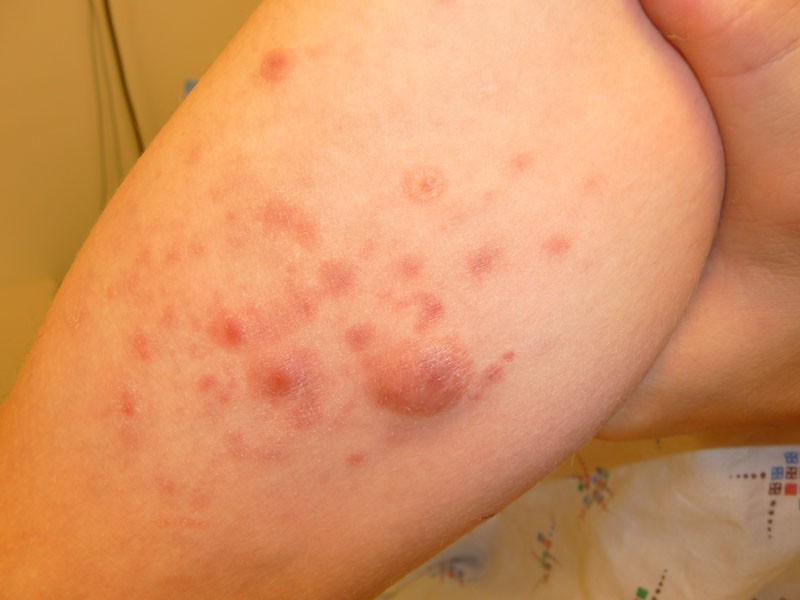

#Adult tcel lyphoma nodule skin
Repeat biopsy from the nodules revealed infiltration of skin with innumerable pleomorphic cells showing epidermotropism with the formation of Pautrier's microabscesses. The peripheral smear revealed atypical cells with indented nuclei constituting more than 5% of the peripheral lymphocytes. Serum calcium and alkaline phosphatase levels remained normal. Repeat investigation revealed an elevated total leukocyte count of 45900 cells/mm 3 (with the differential count showing 74% lymphocytes and 25% polymorphs), elevated serum lactate dehydrogenase (LDH) of 783 IU/L, elevated blood urea nitrogen, and lowered serum albumin. Though there was an initial response the disease relapsed after 3 months, with the development of disseminated papules and annular plaques, which progressed to nodules accompanied by generalized lymph node enlargement and bilateral pitting pedal edema. Multiple umbilicated and crusted papules (a) over the scalp and forehead and (b) over the forearm With the diagnosis of mycosis fungoides stage IV A, the patient was treated with six cycles of the CHOP regimen (cyclophosphamide, adriamycin, vincristine, and prednisone). Hemogram, peripheral smear, biochemical parameters, and imaging studies were normal. Lymph node biopsy showed infiltration of sinusoids with atypical lymphocytes. Skin biopsy revealed sheets of large cells with pleomorphic dark nuclei irregularly infiltrating the dermis with epidermotropism, consistent with cutaneous T-cell lymphoma (CTCL). There was associated lymphadenopathy, with multiple firm, nontender, cervical lymph nodes.

The only significant family history was early demise of her mother at the age of 45 years due to some hematological malignancy.Ĭlinical examination revealed multiple erythematous papules – some umbilicated and crusted – over the scalp, forehead, and extensor aspect of forearms. History of risk factors for ATLL such as immigration from endemic area, intravenous drug abuse, blood transfusion, and extramarital or premarital sexual exposure was negative. It should be kept in mind that the chronic type often presents without hypercalcemia or the characteristic ‘flower cells’ in the peripheral smear.Ī 58-year-old lady residing in South India presented with multiple pruritic skin lesions over the scalp, face, and forearm of 2 weeks’ duration. This case also emphasizes that the chronic type of ATLL can occur in nonendemic areas like India and should be suspected in nonresponding cases of mycosis fungoides. To the best of our knowledge, this is the first case to be reported from India of the chronic type of ATLL associated with mother-to-child transmission of HTLV-1 in two generations. Her mother had died at an early age from a hematological malignancy and her daughter was also found to be seropositive. Due to the unusual clinical findings we did HTLV-1 Enzyme-linked immunosorbent assay (ELISA), which turned out to be positive in high titers. Although she responded initially to chemotherapy, the disease relapsed after 3 months, and she developed disseminated infiltrated skin lesions, generalized lymphadenopathy, and leukemia. The skin biopsy was consistent with cutaneous T-cell lymphoma. At a tertiary healthcare center in South India, a 58-year-old female presented with multiple erythematous, crusted, and umbilicated papules over the body along with cervical lymphadenopathy. Adult T-cell leukemia/lymphoma (ATLL) is an aggressive leukemia/lymphoma of mature T-lymphocytes caused by human T-cell lymphotropic virus type 1 (HTLV-1).


 0 kommentar(er)
0 kommentar(er)
